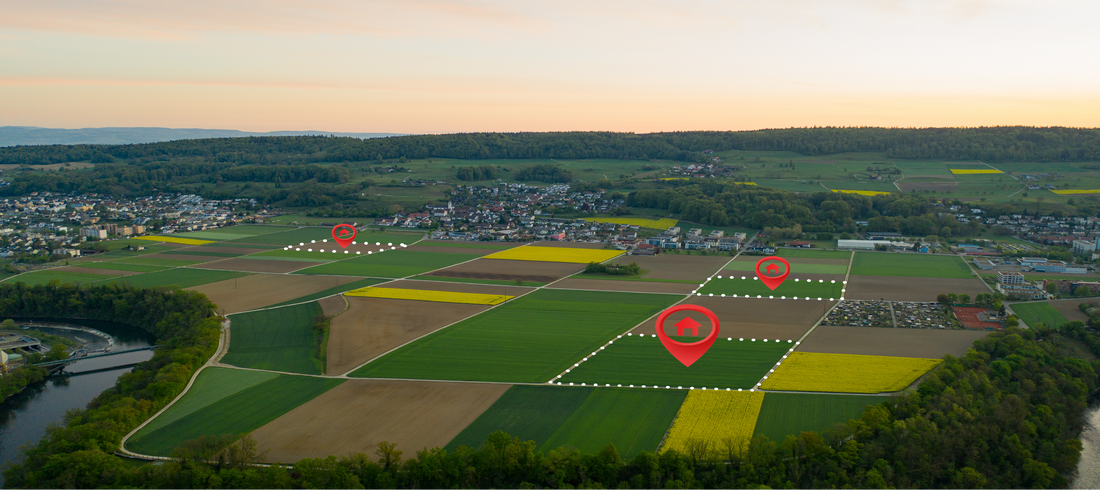
Why Farmland and Acreage Are the Next Big Investment Class
C MWhen most people picture investing, they think of Wall Street. Stocks flashing green and red. Mutual funds with names so complex they sound like riddles. Or maybe cryptocurrency, buzzing in and out of fashion.
But if we strip away the noise and ask, what really sustains wealth? What always has value? The answer is right beneath our feet. It’s land.
And not just any land, farmland, and acreage. Today, farmland is rapidly emerging as one of the most sought-after investment classes, attracting billionaires, hedge funds, and families who want to secure something more stable than paper promises. The question is, will the average American family be part of this movement, or will the gates close before they get their chance?
The Simple Truth: People Will Always Need Food and Water
Markets rise and fall. Tech trends come and go. But food and water remain the most non-negotiable needs of human life.
- Population growth: By 2050, the global population is expected to reach nearly 10 billion. More mouths to feed means greater demand for food production.
- Shrinking farmland supply: According to the American Farmland Trust, the U.S. lost 11 million acres of farmland between 2001 and 2016 to development; that’s roughly the size of New Jersey.
- Water scarcity: The U.S. Geological Survey has identified multiple regions of the U.S. as water-stressed. This makes farmland with water access not only valuable but also strategic.
Unlike tech stocks, which can disappear overnight, land is finite and indispensable. You can’t manufacture more of it. This built-in scarcity makes farmland uniquely resilient compared to other asset classes.
The Billionaire Stampede Into Farmland
Follow the money, and the picture becomes even clearer.
- Bill Gates is now the largest private farmland owner in America, with over 240,000 acres under his name.
- BlackRock, Vanguard, and other asset managers are actively exploring farmland and rural development investments as part of long-term wealth strategies.
- Pension funds and institutional investors are diversifying into farmland as a hedge against inflation and a stable source of income.
Why are they doing this? Because farmland checks the boxes that sophisticated investors crave: stability, income potential, appreciation, and inflation protection.
Historically, farmland values have climbed consistently for decades, even during recessions. Consider this USDA data:

Source: USDA National Agricultural Statistics Service
The chart shows that the average U.S. cropland value per acre has grown from around $1,100 in 2000 to over $5,000 in 2023, nearly a five-fold increase. That’s steady, generational growth that outpaces inflation and rivals stock market returns, but with far less volatility.
Why Average Families Deserve Access Too
The catch? The system is not built for everyday people.
Buying farmland outright requires deep pockets, and managing it requires expertise. This barrier has allowed billionaires and corporations to corner the market, leaving regular families with little more than stocks, 401(k)s, and retirement funds that rise and fall with every geopolitical headline.
But families deserve something tangible, something they can see, touch, and even hand down. Land is exactly that:
- Security: Land won’t vanish with a market crash.
- Utility: It can be leased, farmed, or developed.
- Legacy: It can be passed down to children and grandchildren.
Owning a piece of land isn’t just about numbers on a balance sheet. It’s about peace of mind, knowing you have something real, permanent, and life-sustaining.
Farmland vs. Other Investments
Let’s stack farmland against other traditional asset classes:
|
Asset Class |
Volatility |
Inflation Hedge |
Tangibility |
Long-Term Growth |
|
Stocks |
High |
Weak-Moderate |
None |
Strong (volatile) |
|
Bonds |
Low |
Weak |
None |
Moderate |
|
Gold |
Moderate |
Strong |
Yes |
Low-Moderate |
|
Farmland |
Low |
Strong |
Yes |
Strong & steady |
Farmland is unique because it produces value every single year (through crops, leases, or renewable energy agreements) while also appreciating steadily in price. You get both income and growth, with far less volatility than stocks or commodities.
Community Impact: More Than Just Returns
Investing in farmland and acreage isn’t only about financial gain. It’s about impact.
- Rural revitalization: Reviving small towns by bringing agricultural jobs and sustainable projects back.
- Food security: Strengthening America’s ability to produce its own food.
- Homesteads and RV developments: Blending lifestyle and income opportunities for families who want land to live on, not just profit from.
This isn’t just about creating wealth for investors; it’s about creating healthier, stronger communities for everyone.
The Next Big Investment Class
When you zoom out, the signs are undeniable:
- Farmland is finite.
- Farmland is essential.
- Farmland is profitable.
- Farmland is generational.
It’s no wonder the wealthiest people in the world are racing to secure as much of it as they can. But the question remains: will average families be locked out, or will new models like land banks and land trusts open the doors for them to participate?
Closing Thought
Land has always been the foundation of wealth. Kings, pioneers, and tycoons knew it. Billionaires know it today. The difference now is that the stakes are higher: farmland isn’t just an asset class; it’s the backbone of survival.
We believe the future of investment isn’t another Wall Street product. It’s the soil. It’s the water. It’s the ability to sustain life while building generational wealth.
The opportunity is here. The question is, who will seize it?
